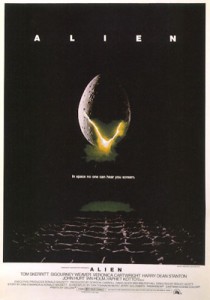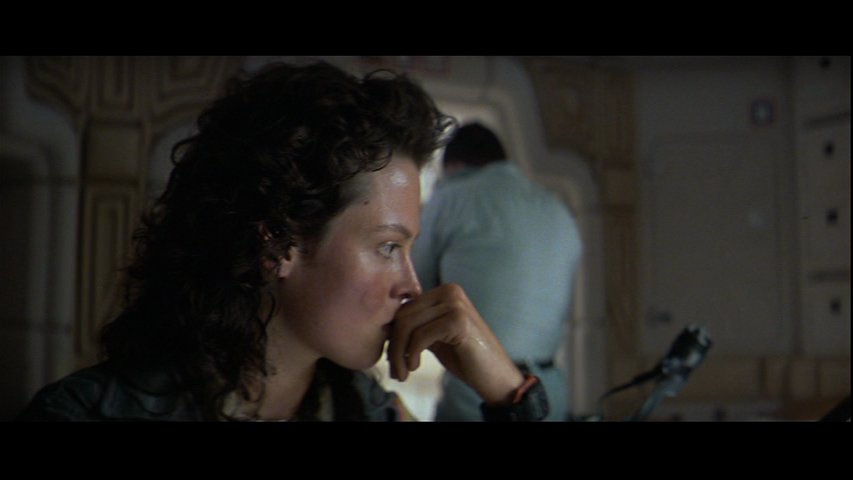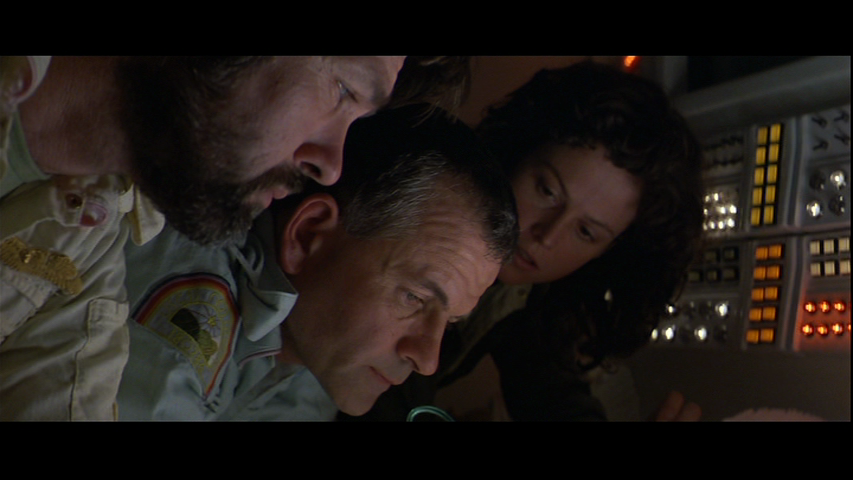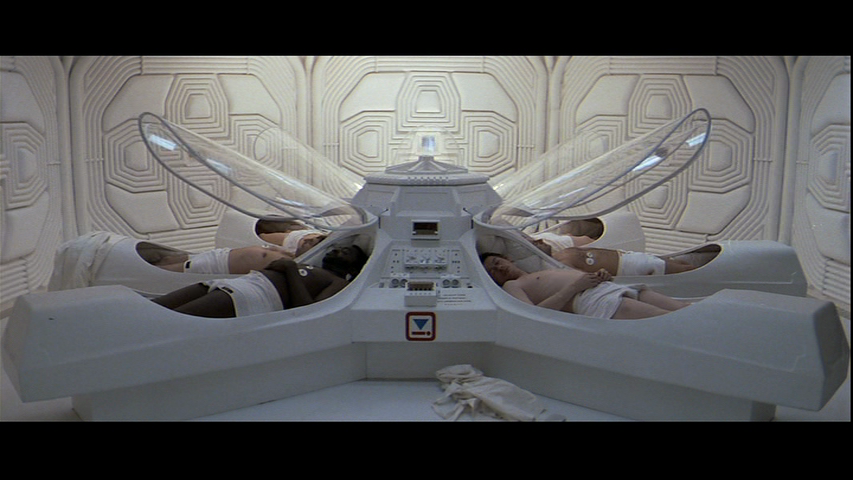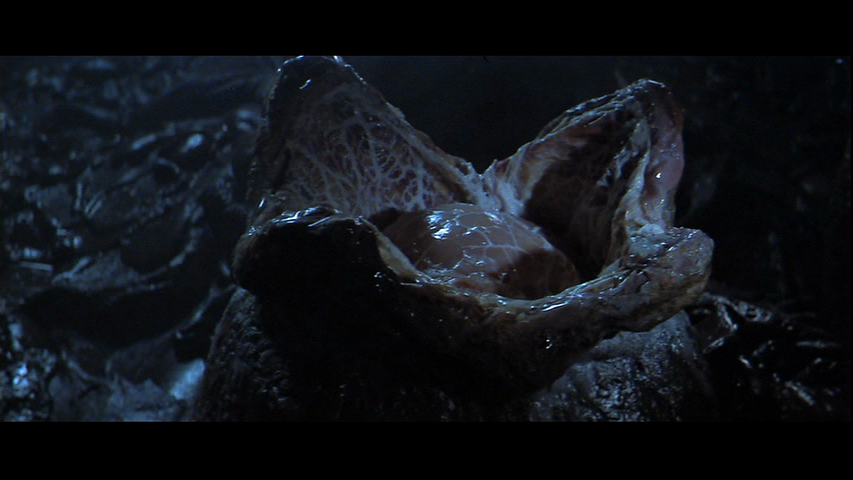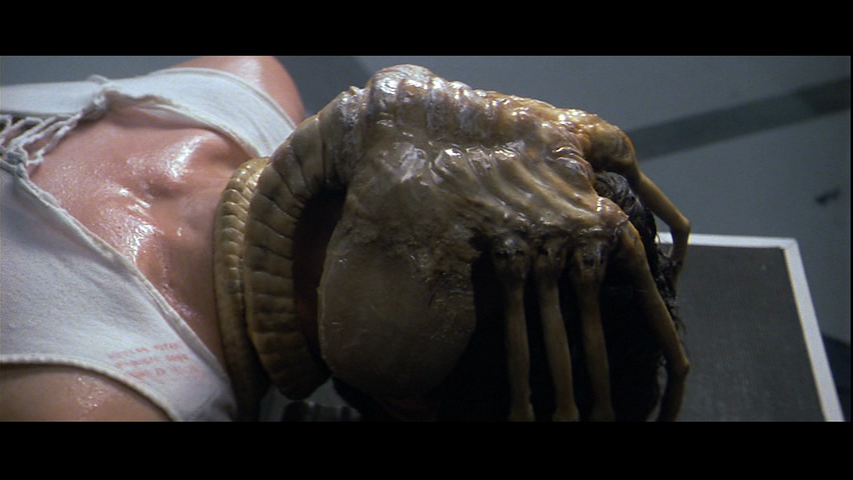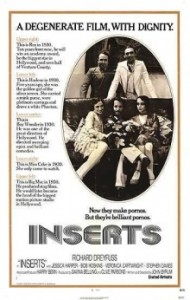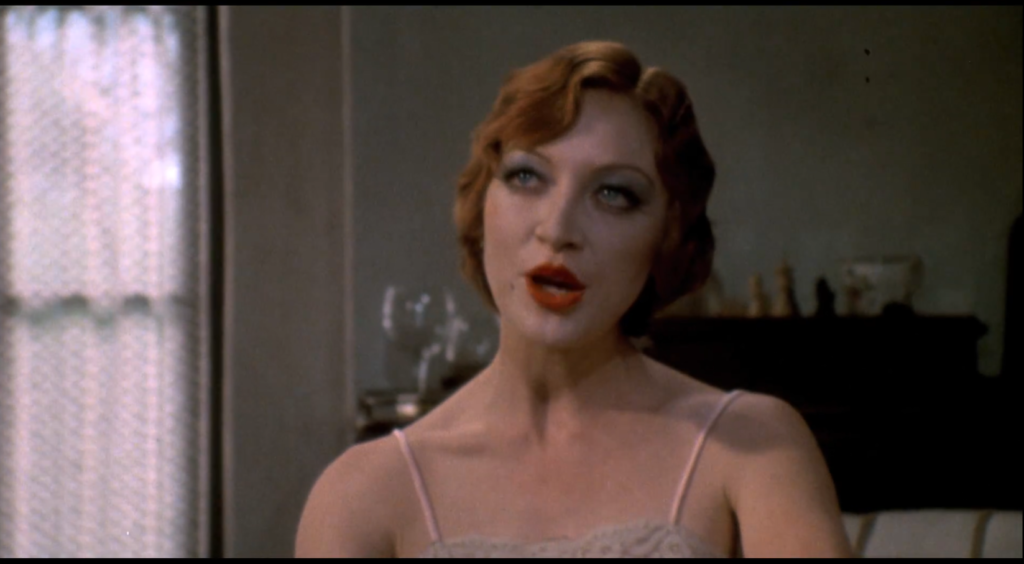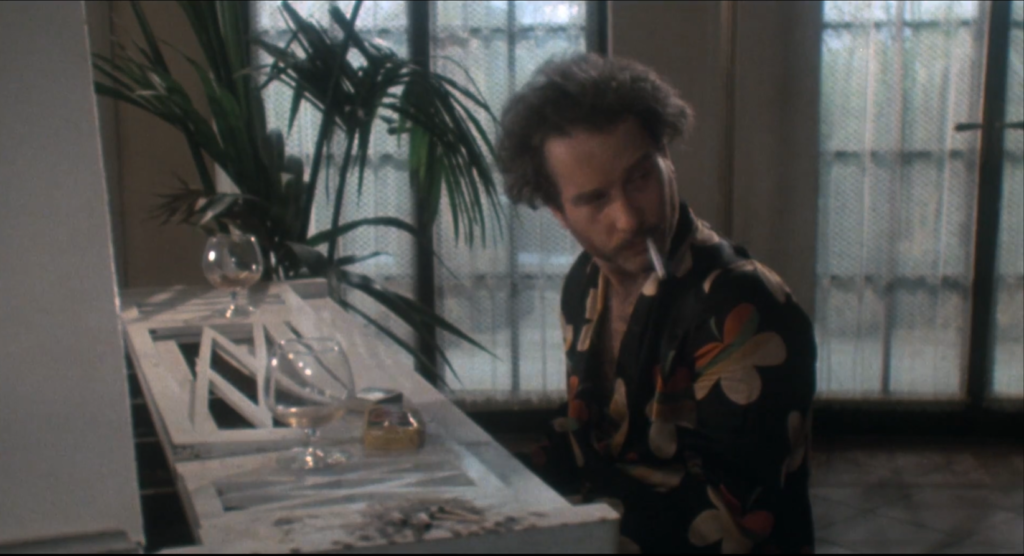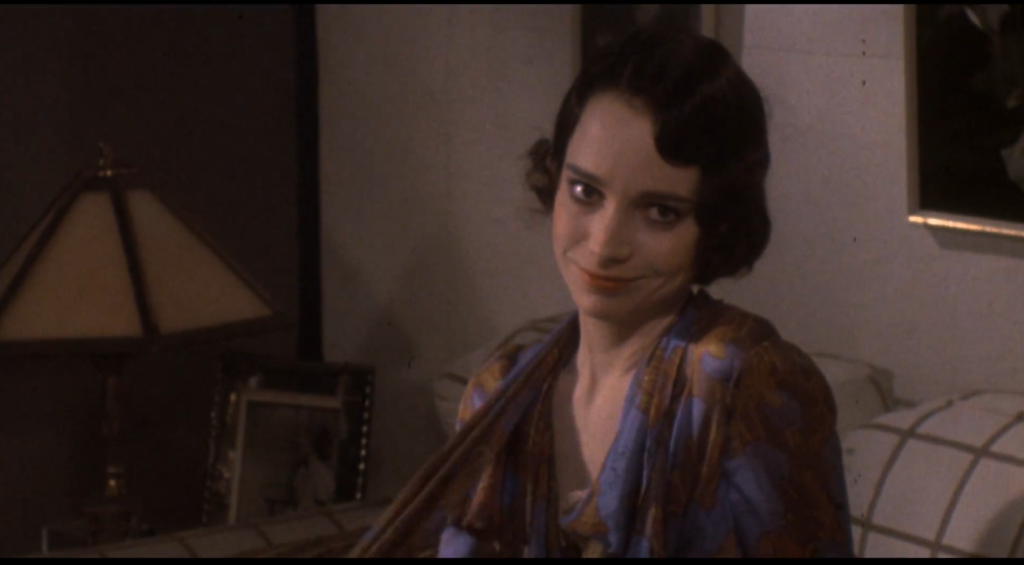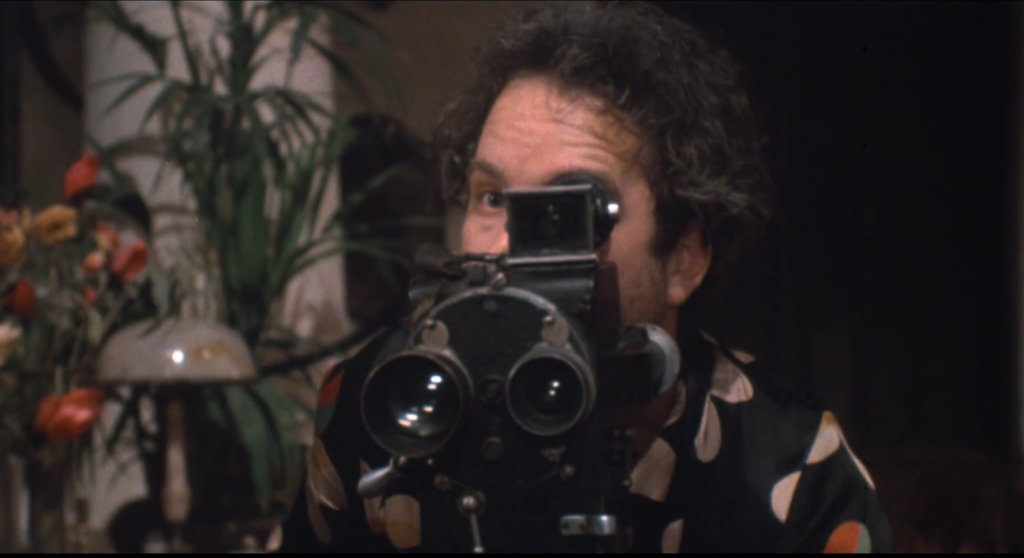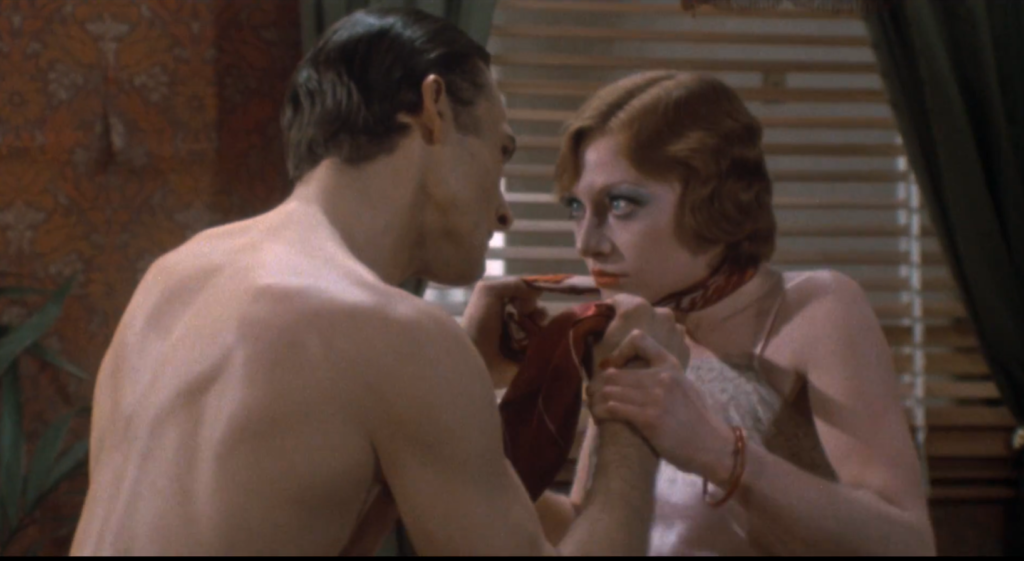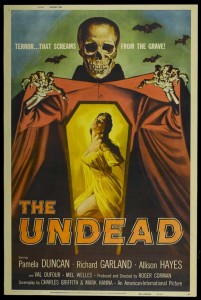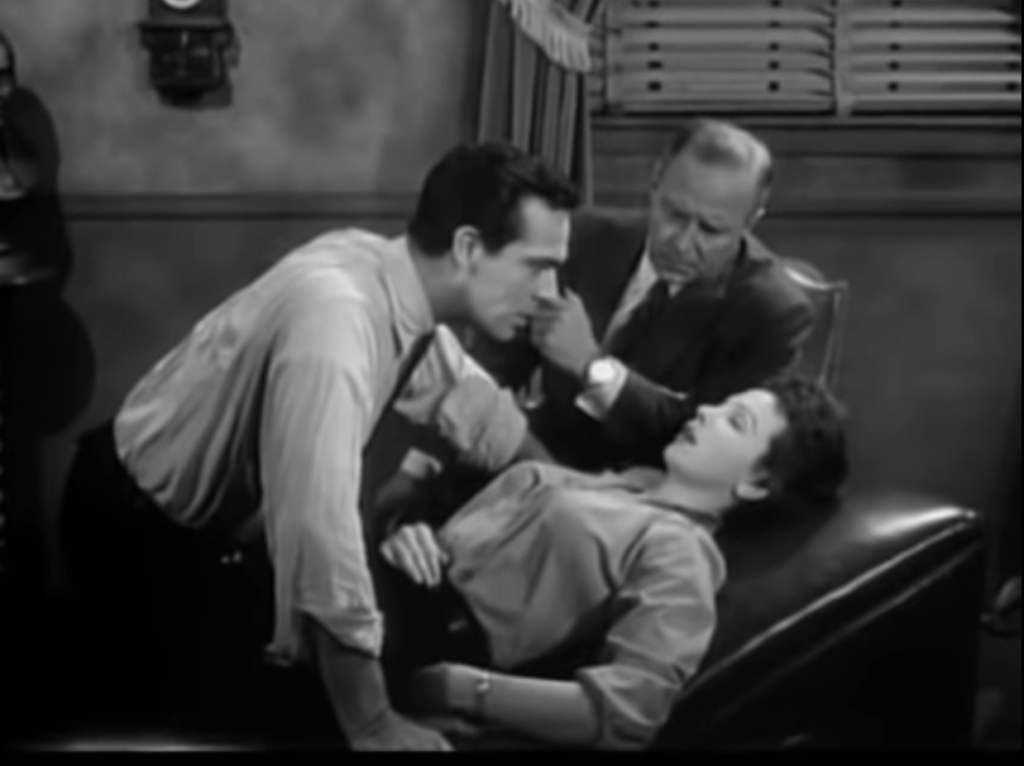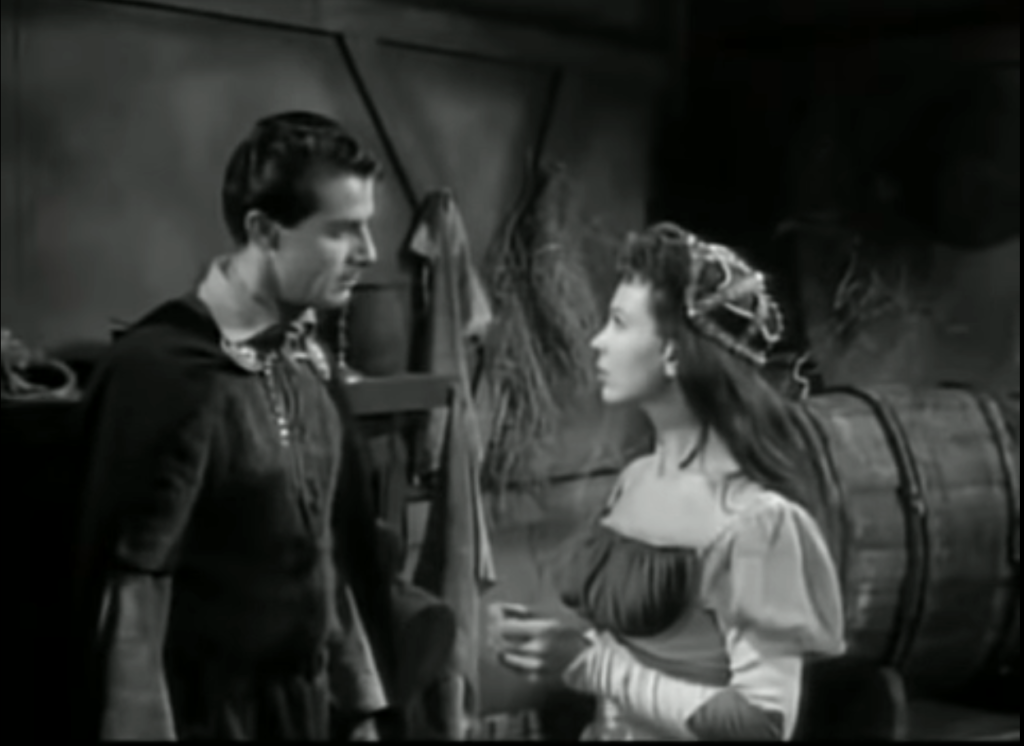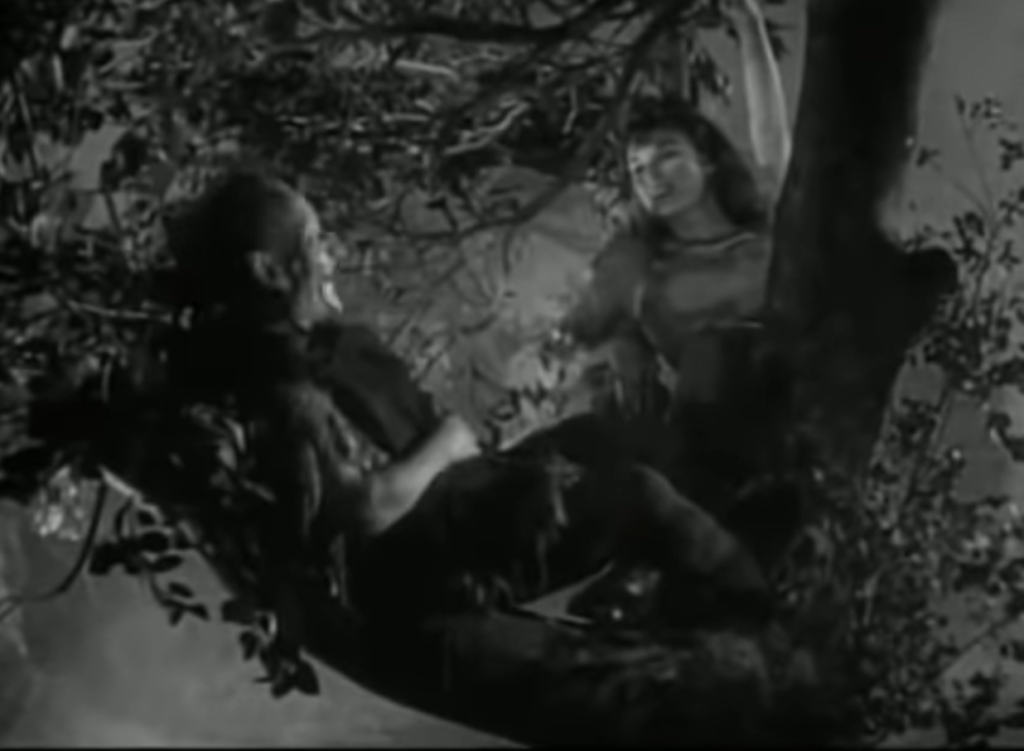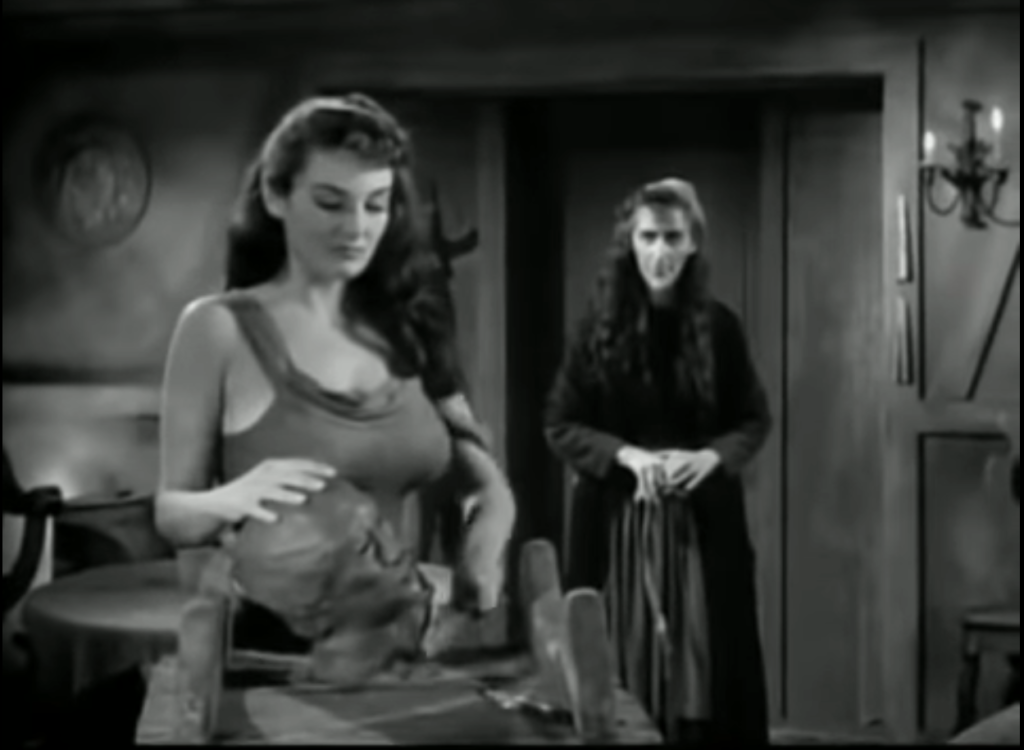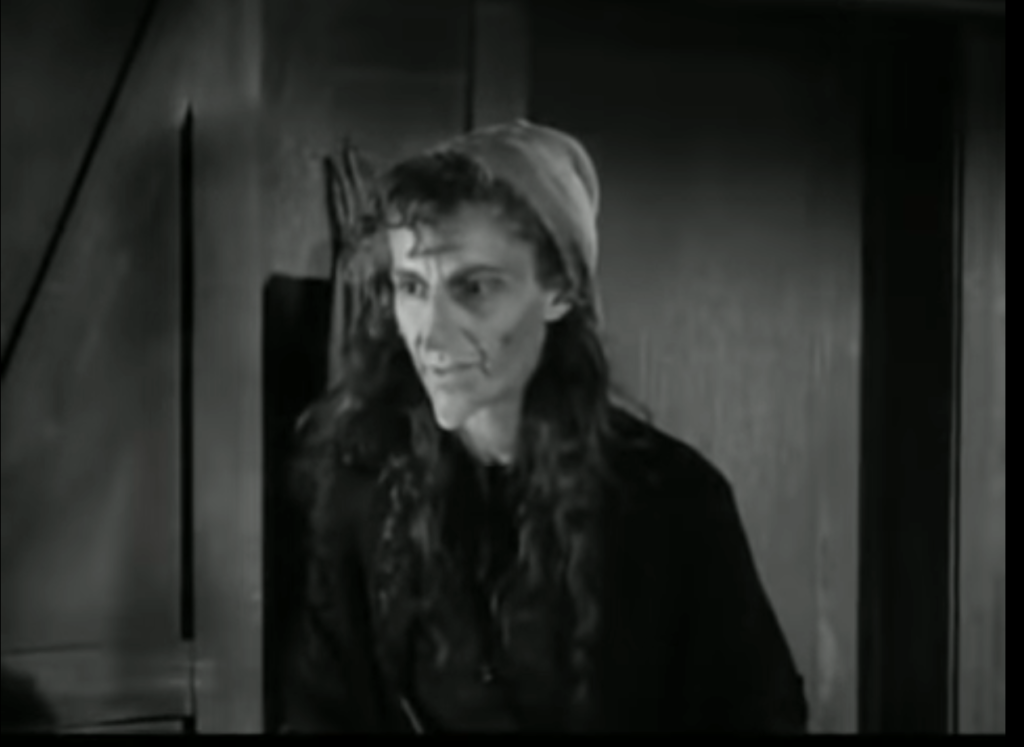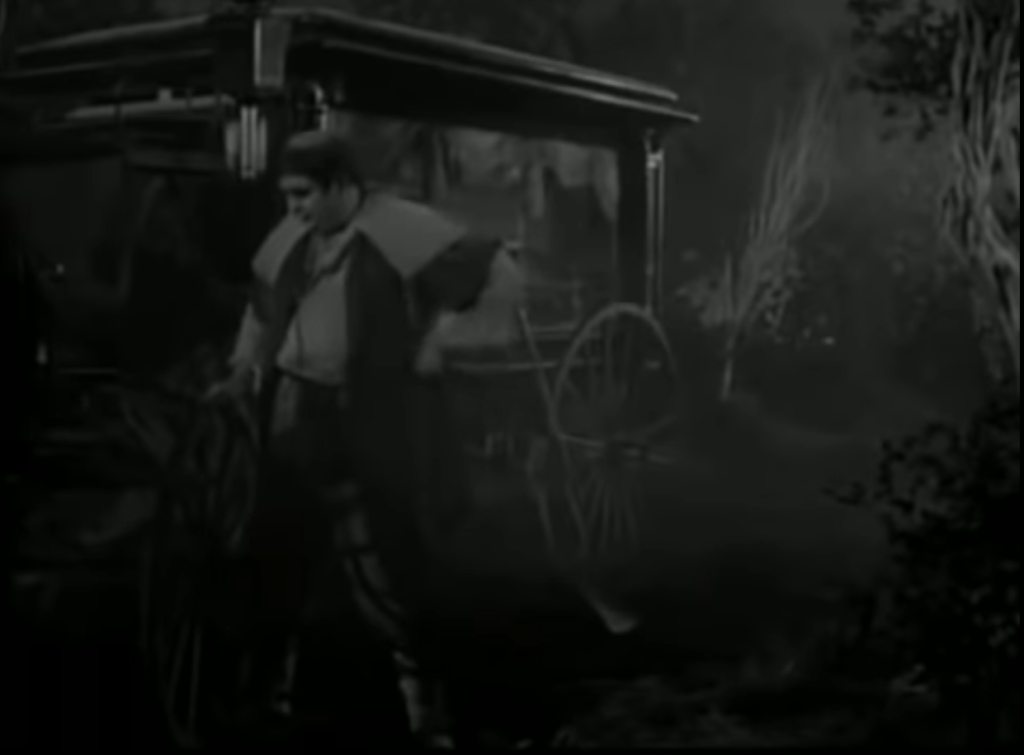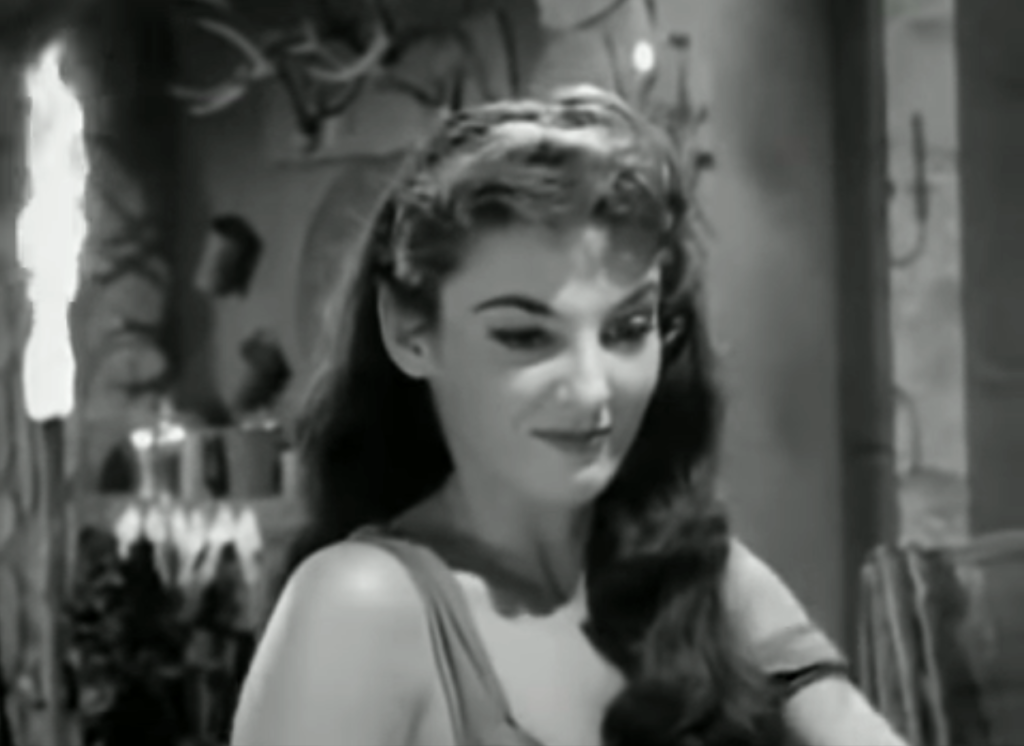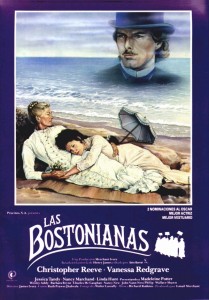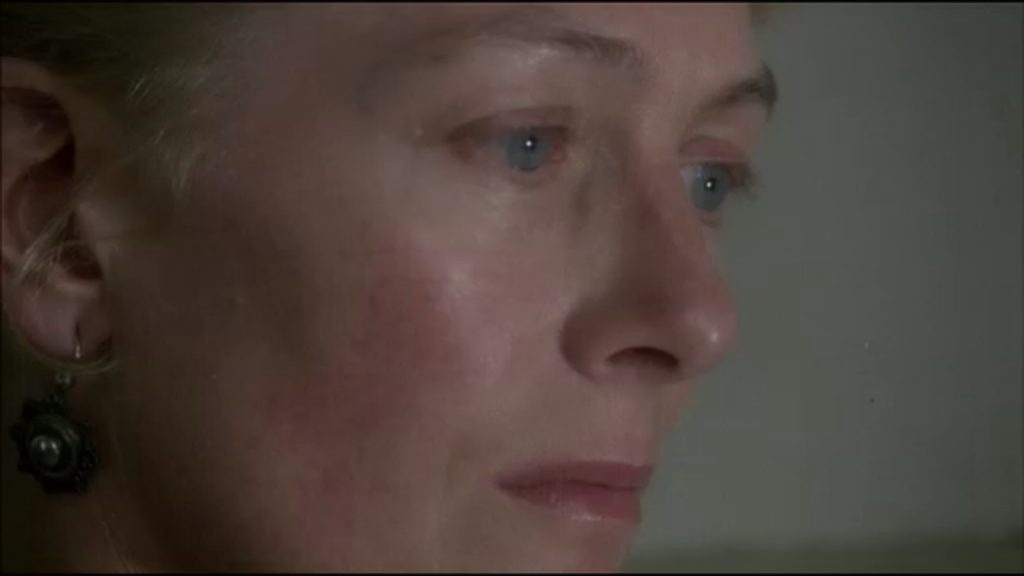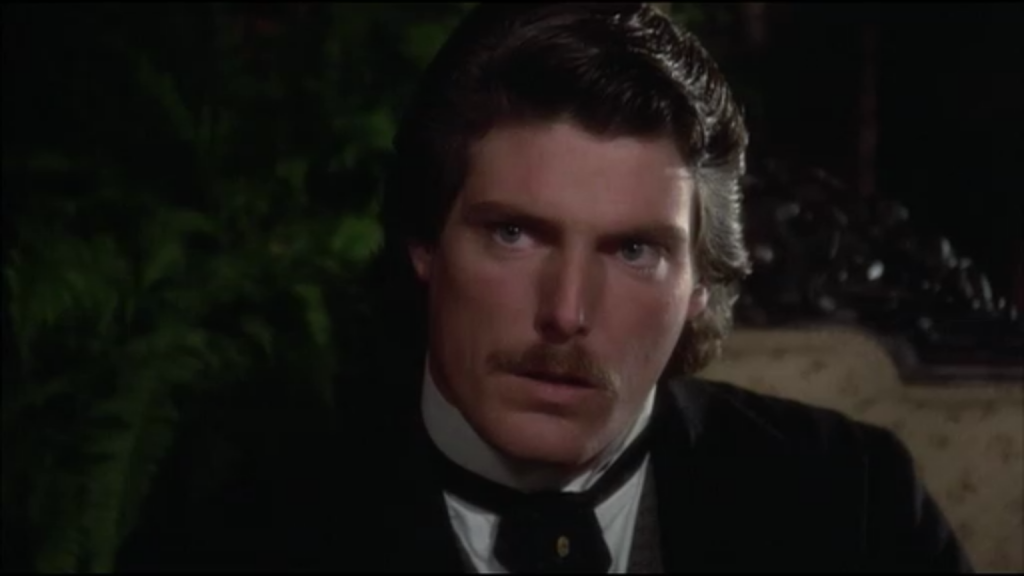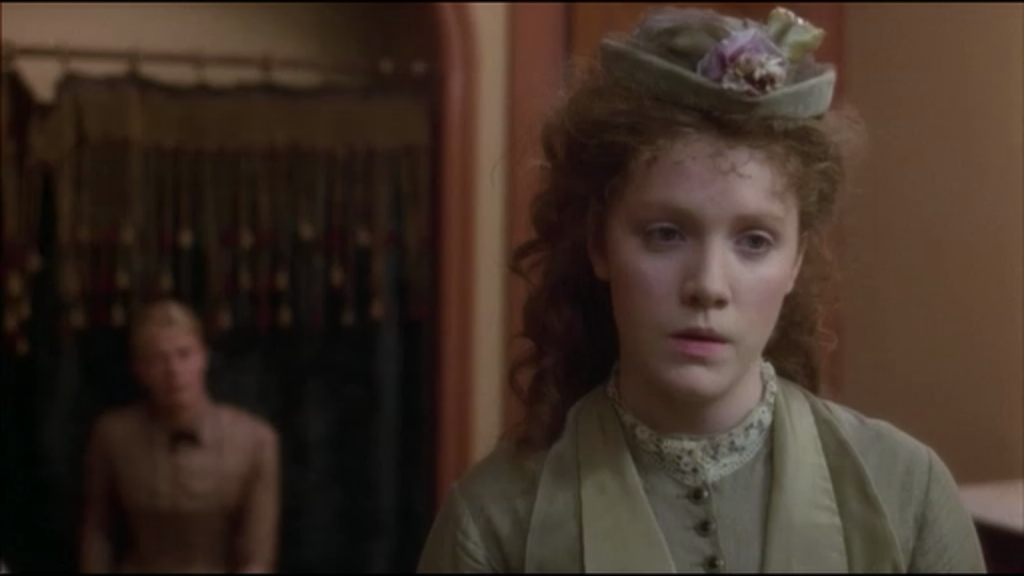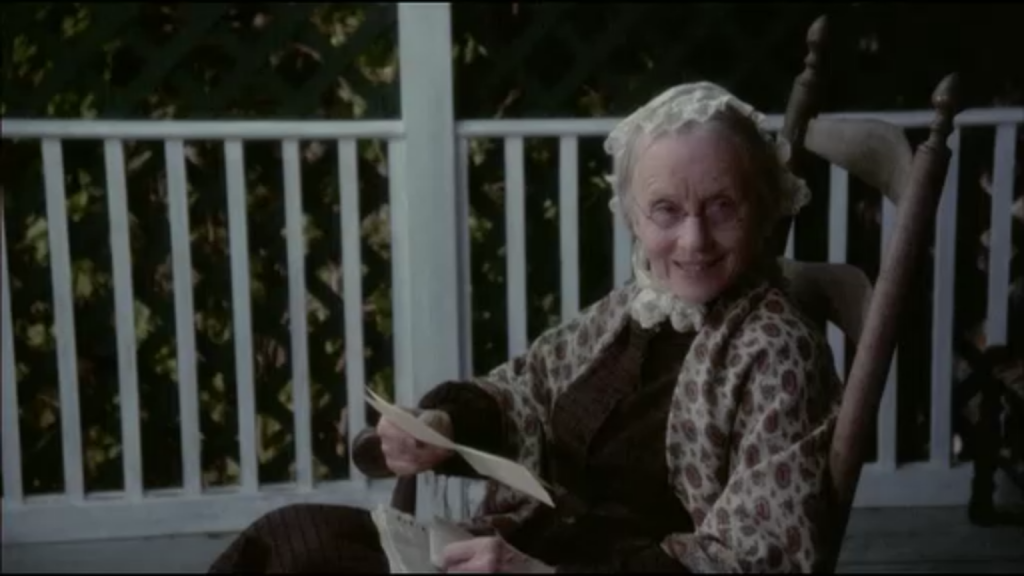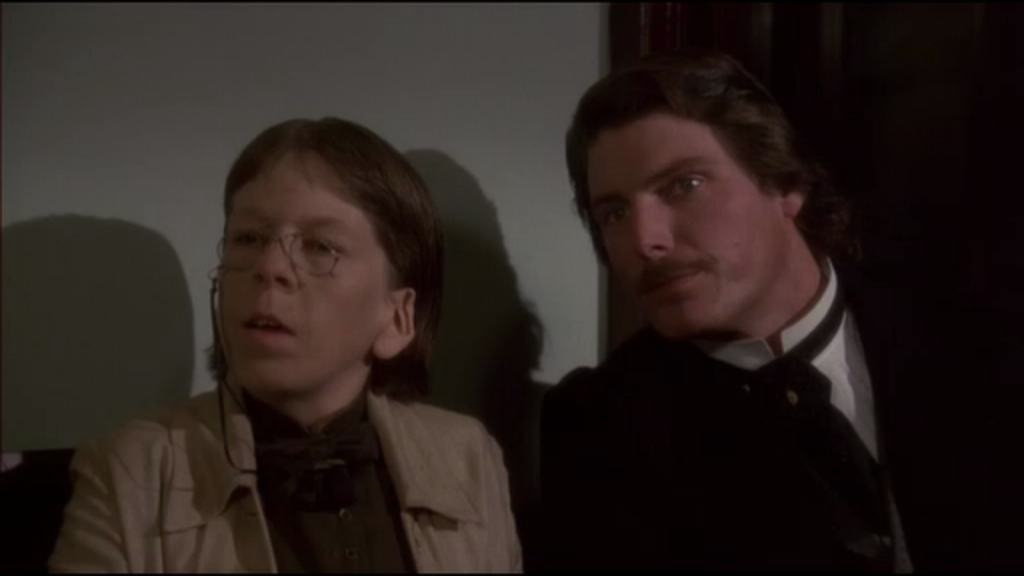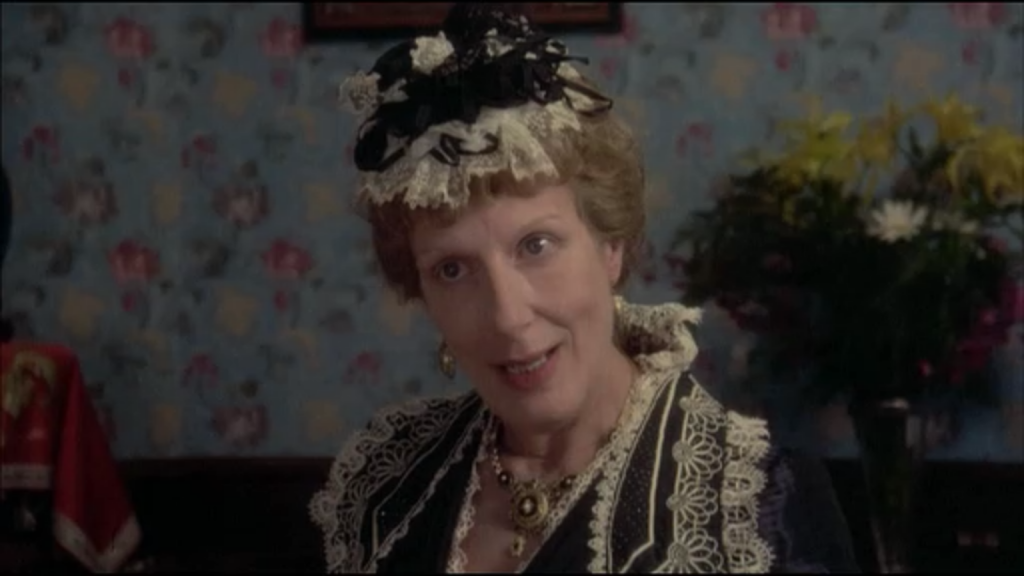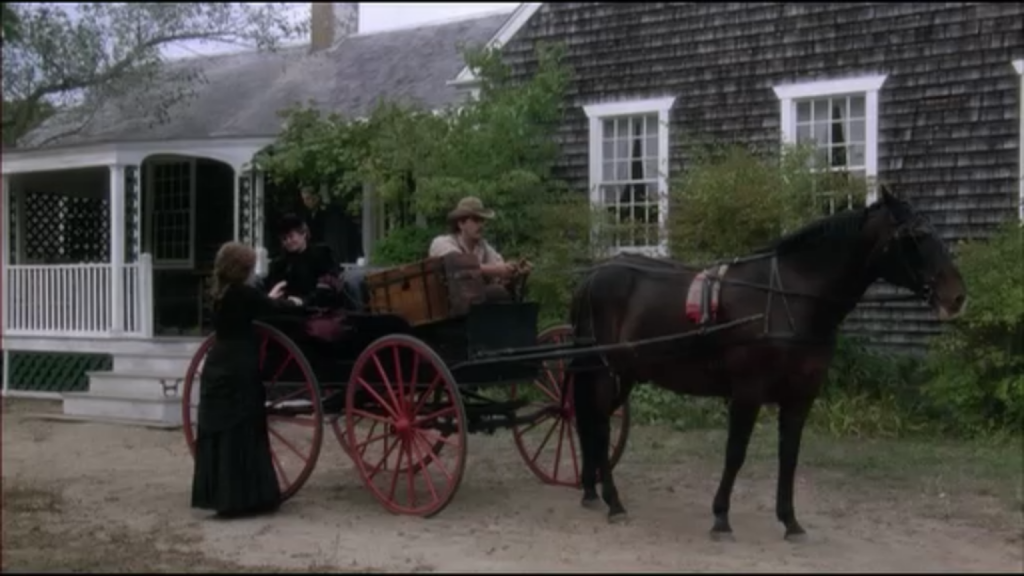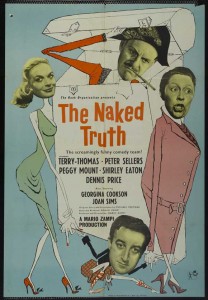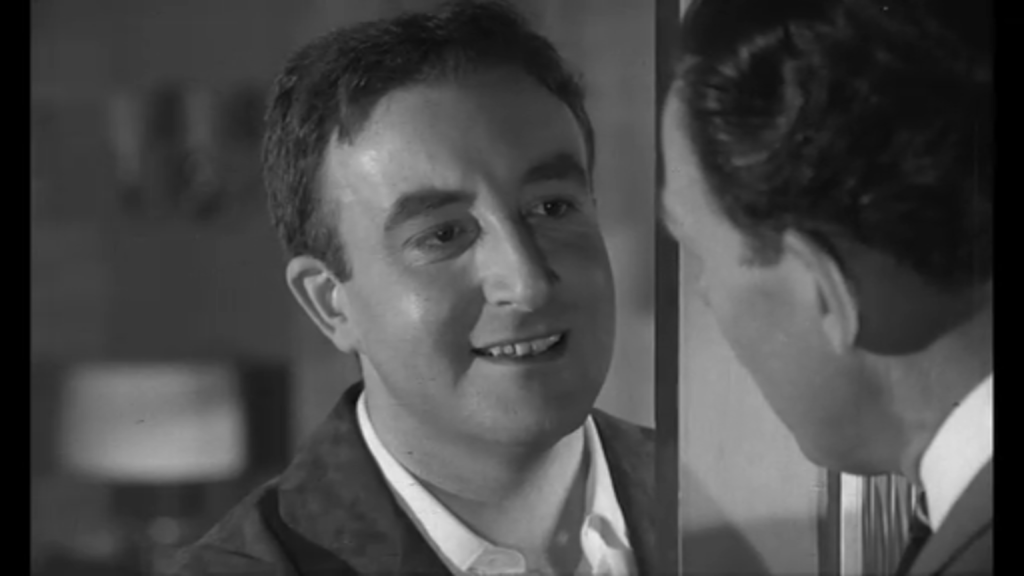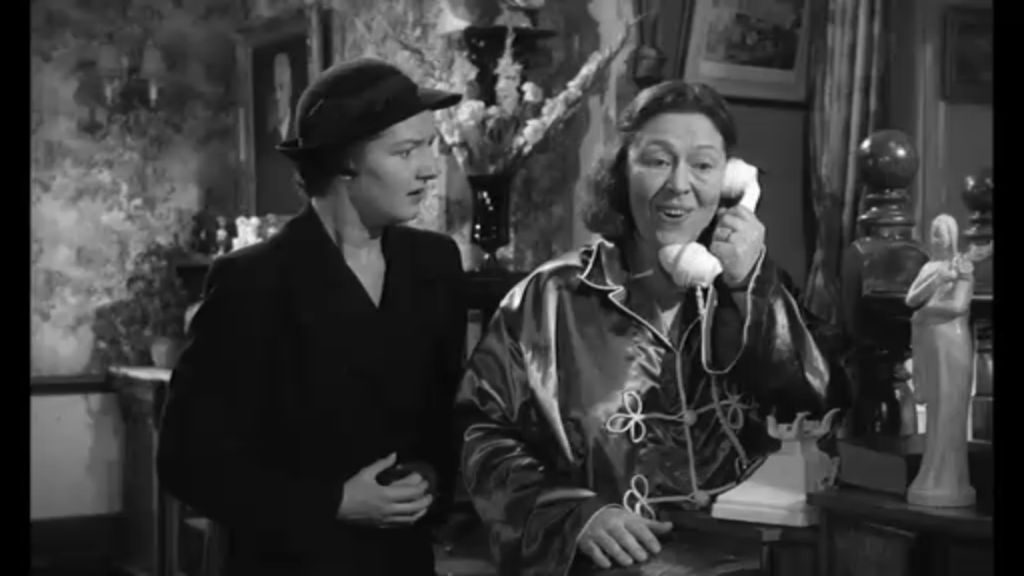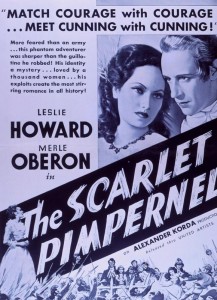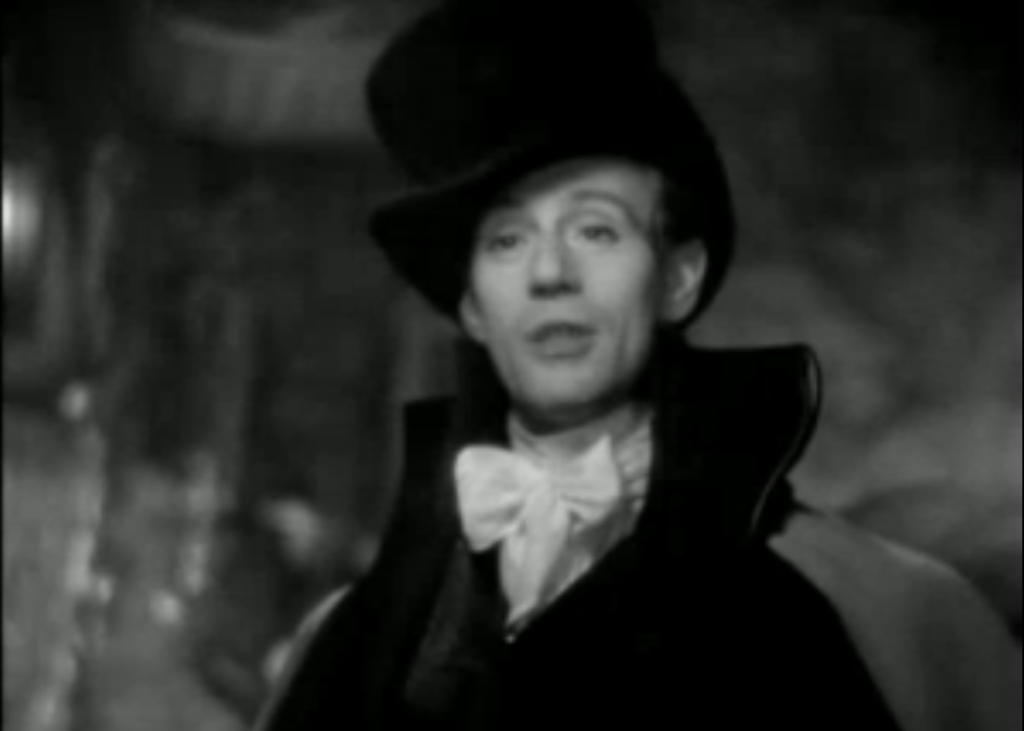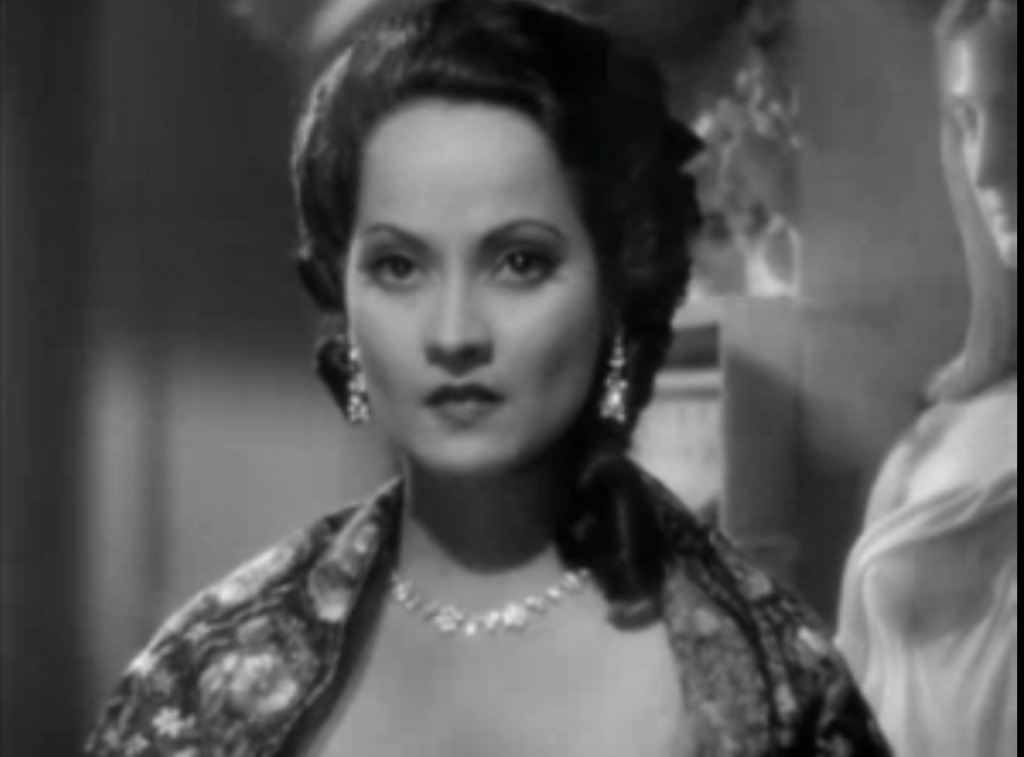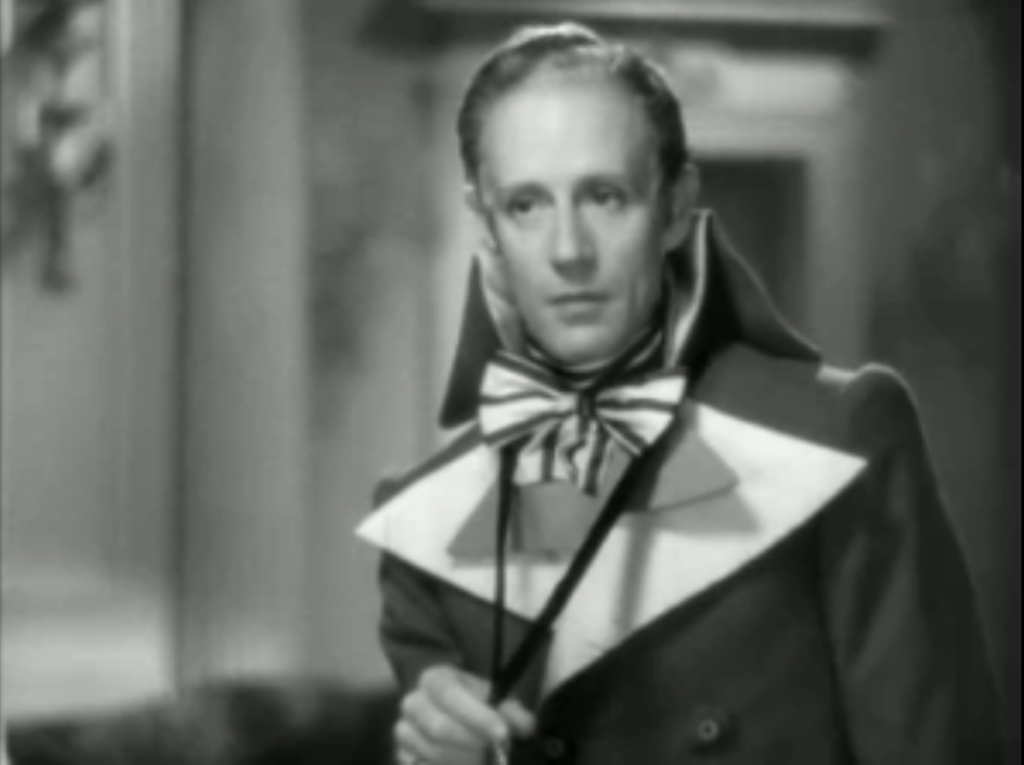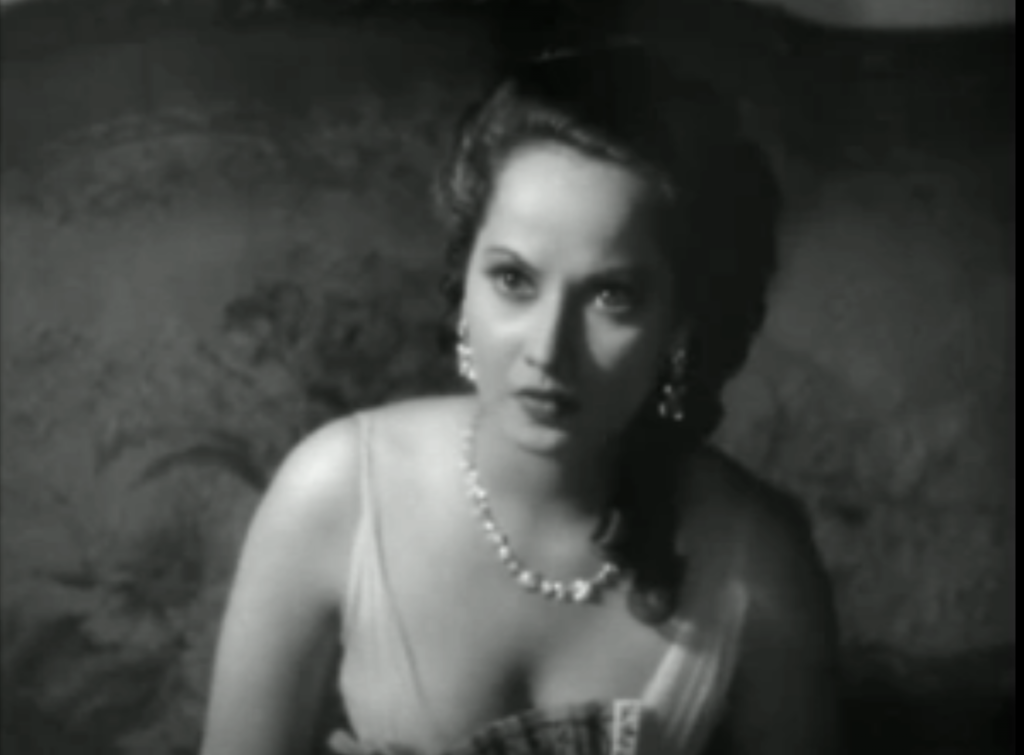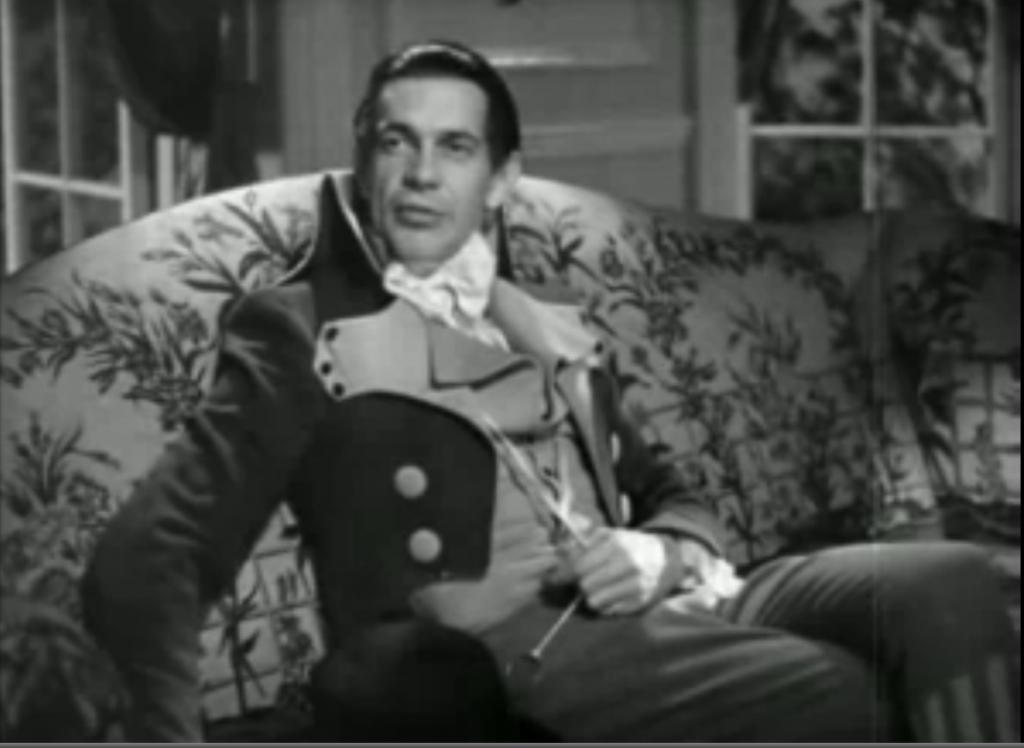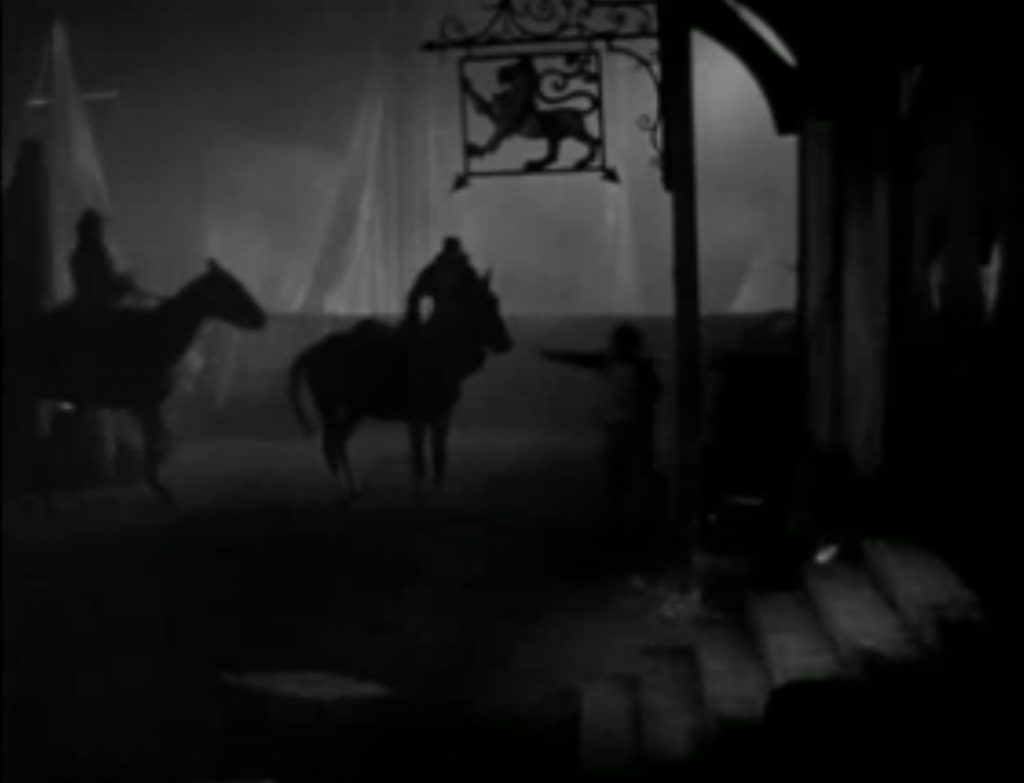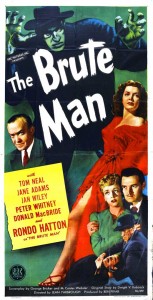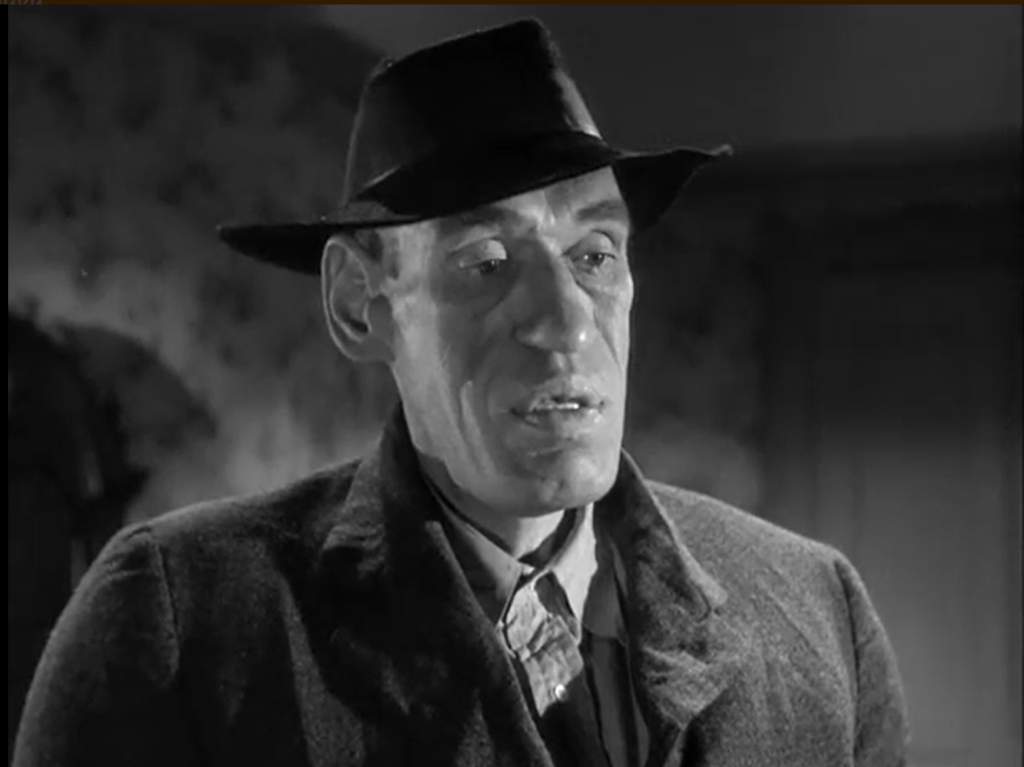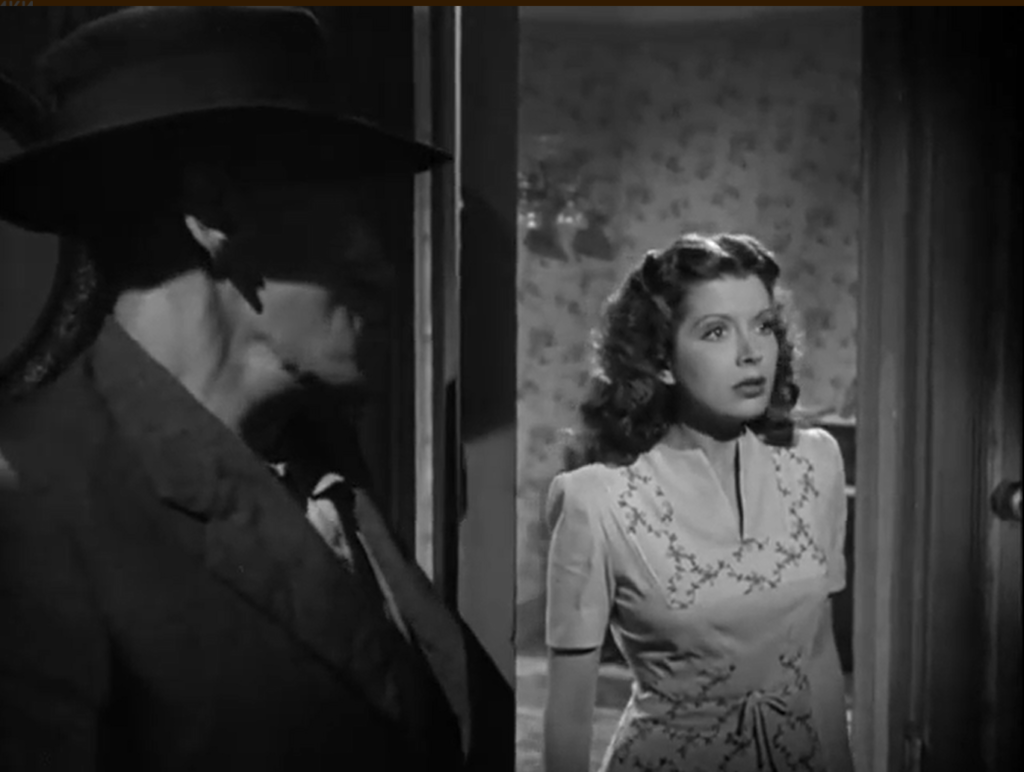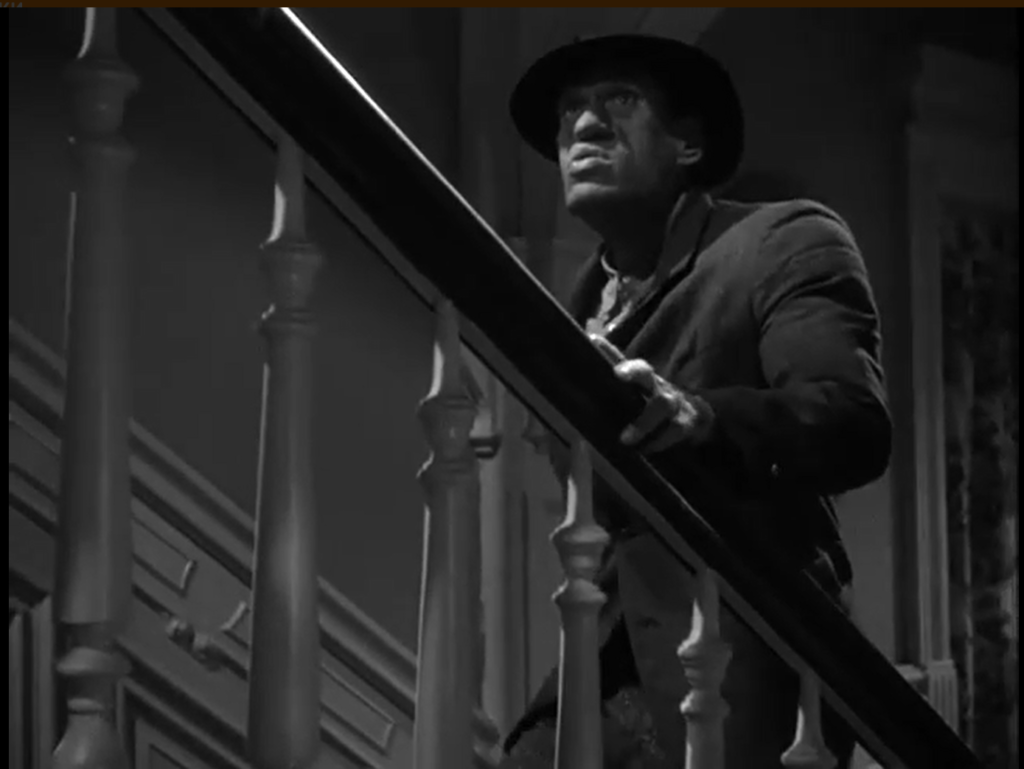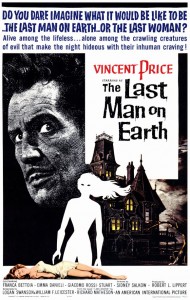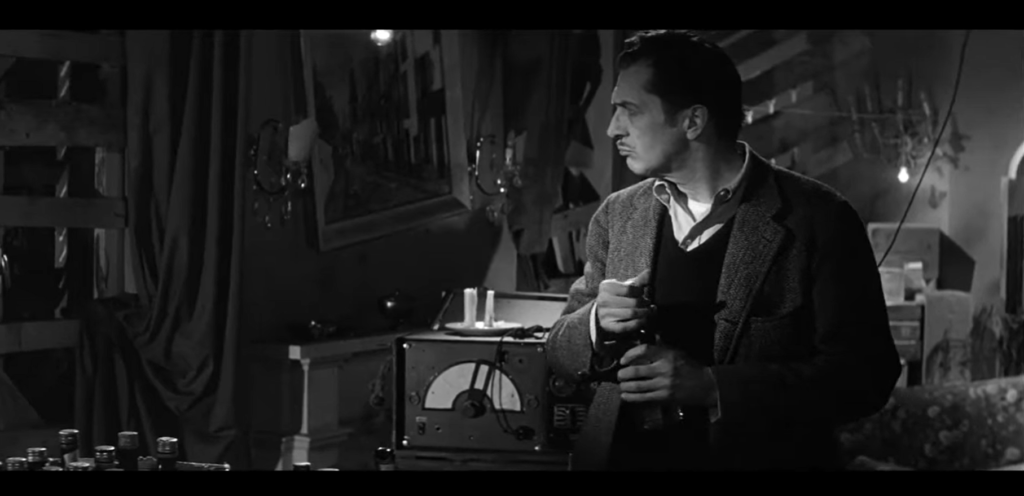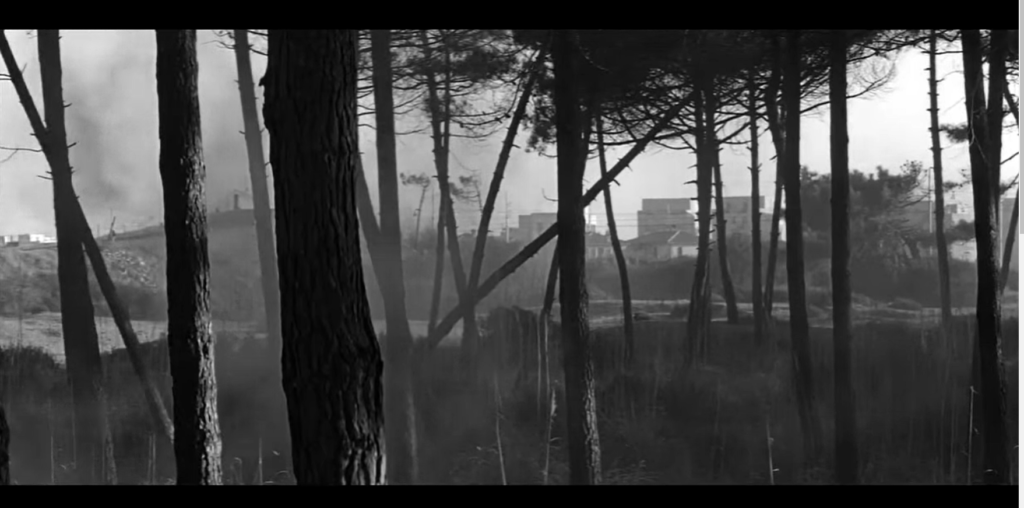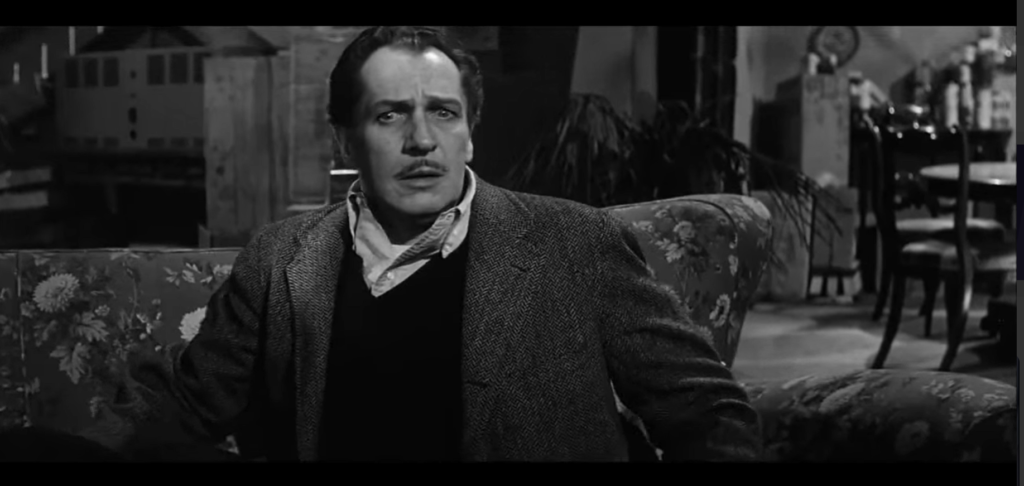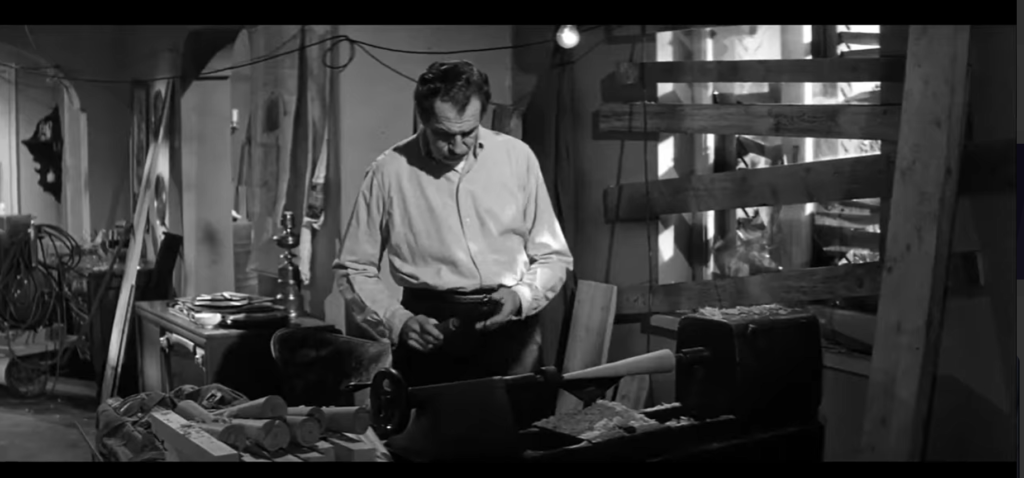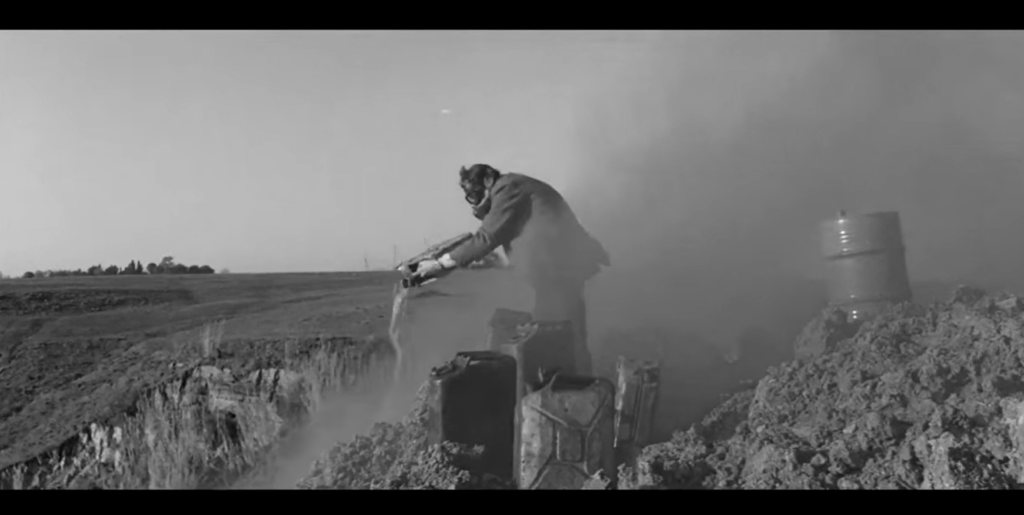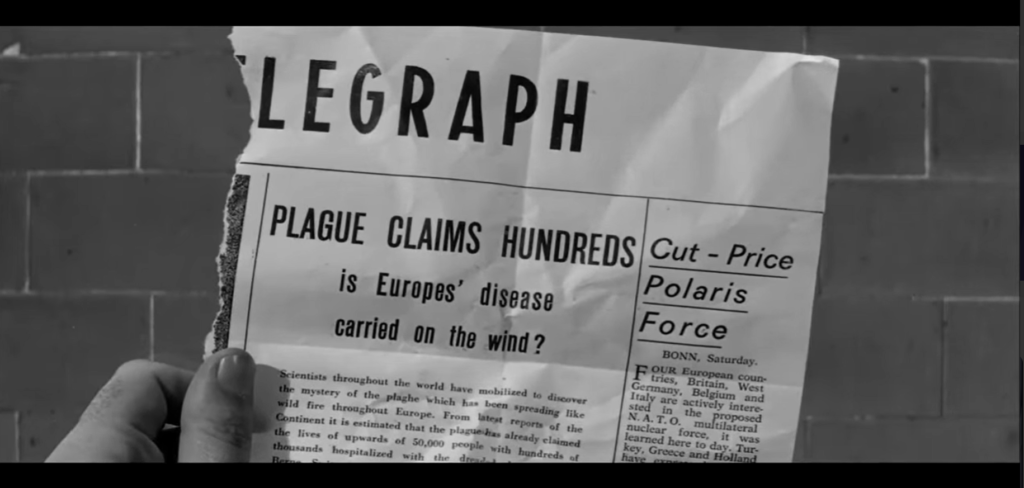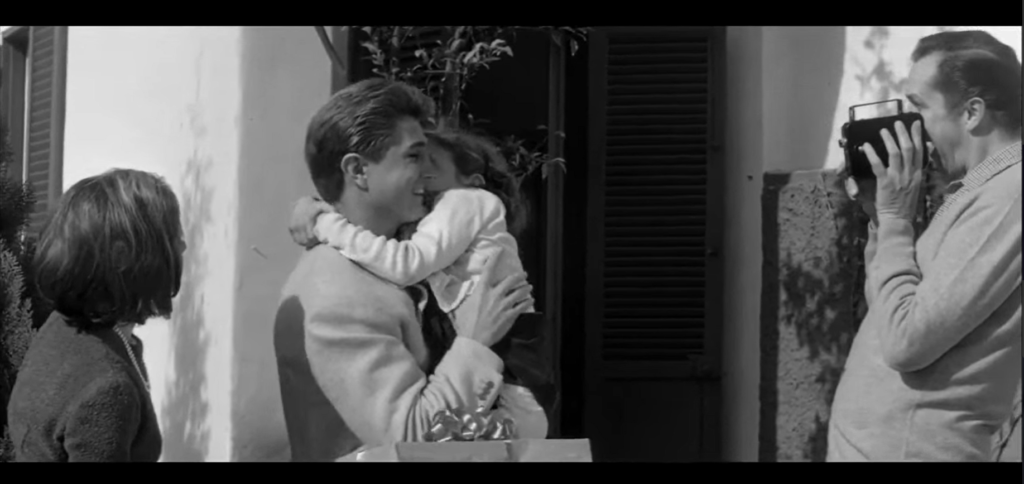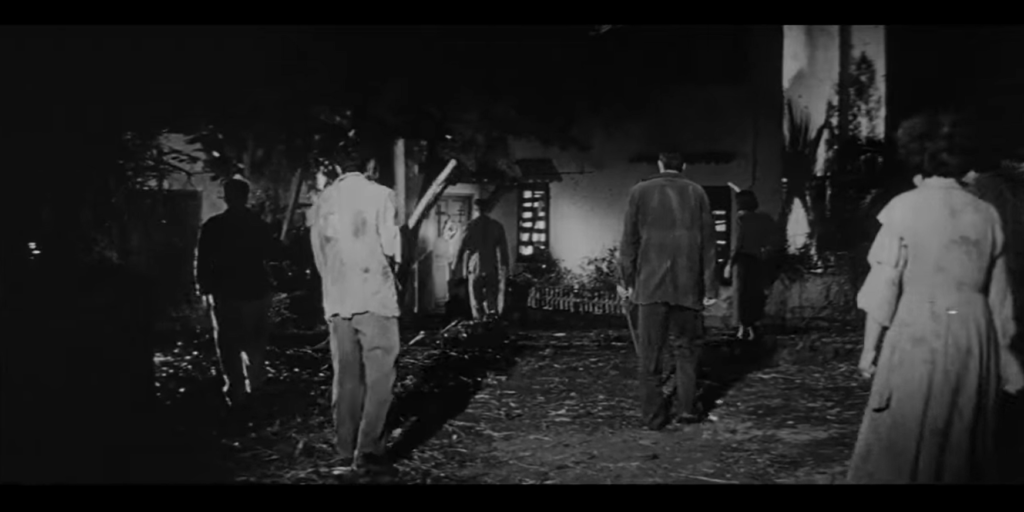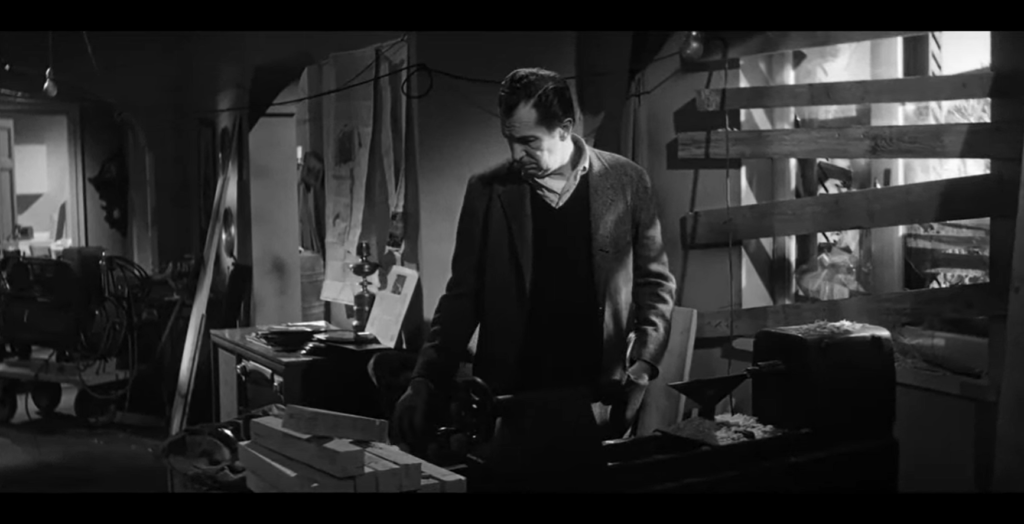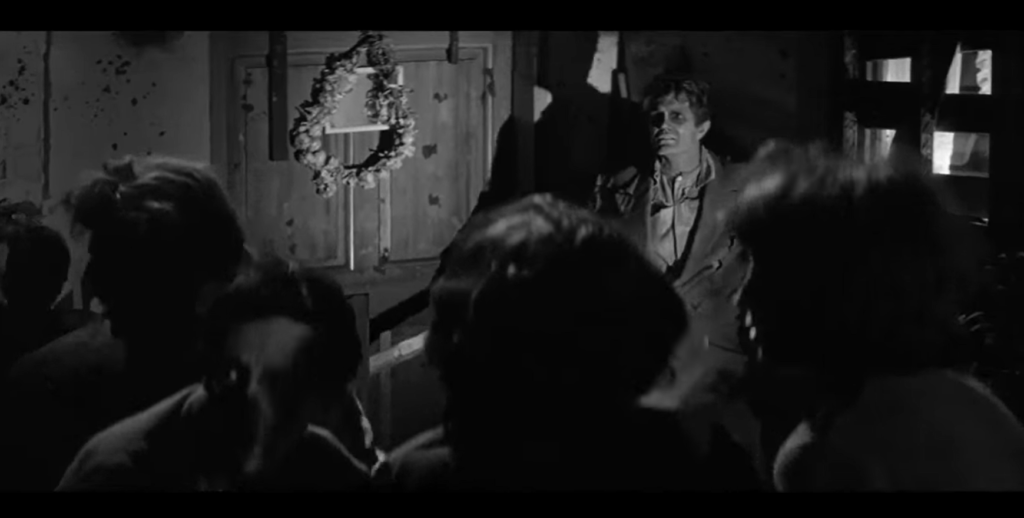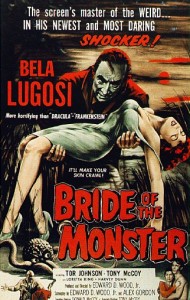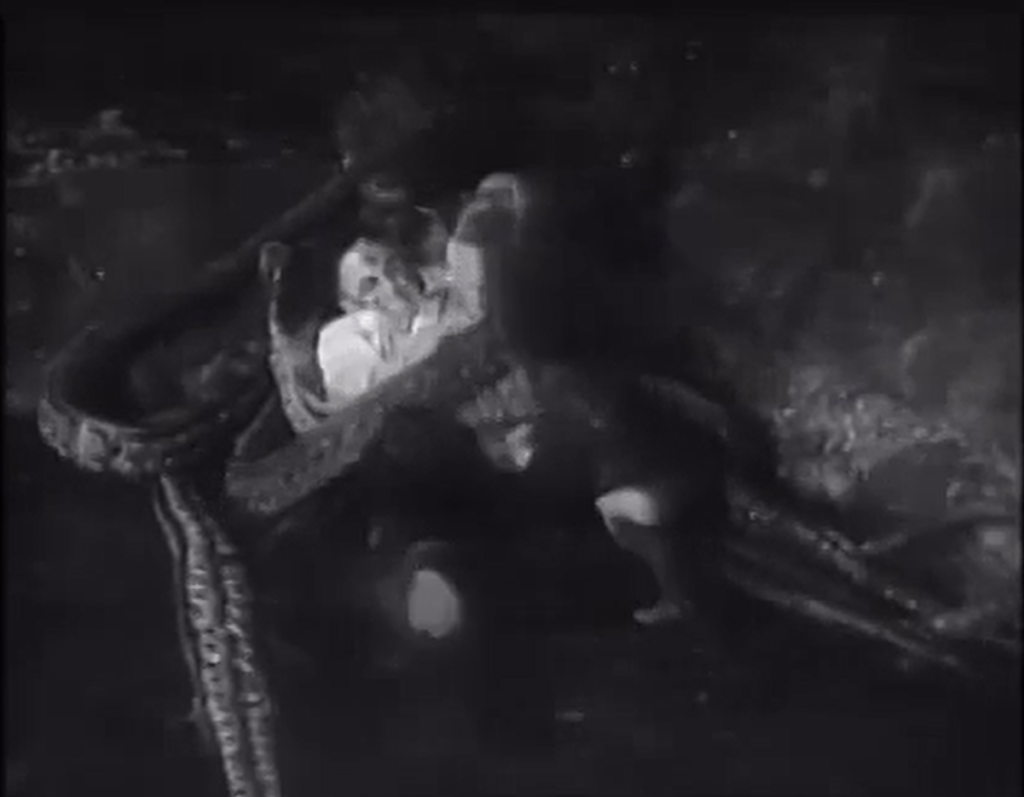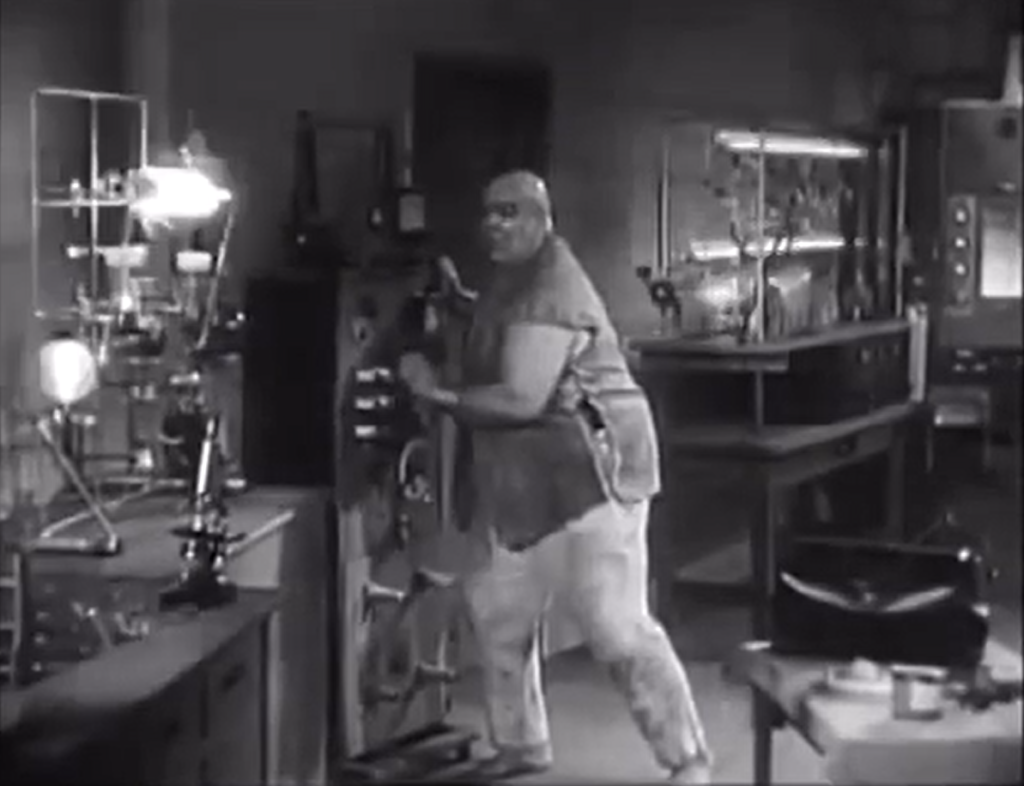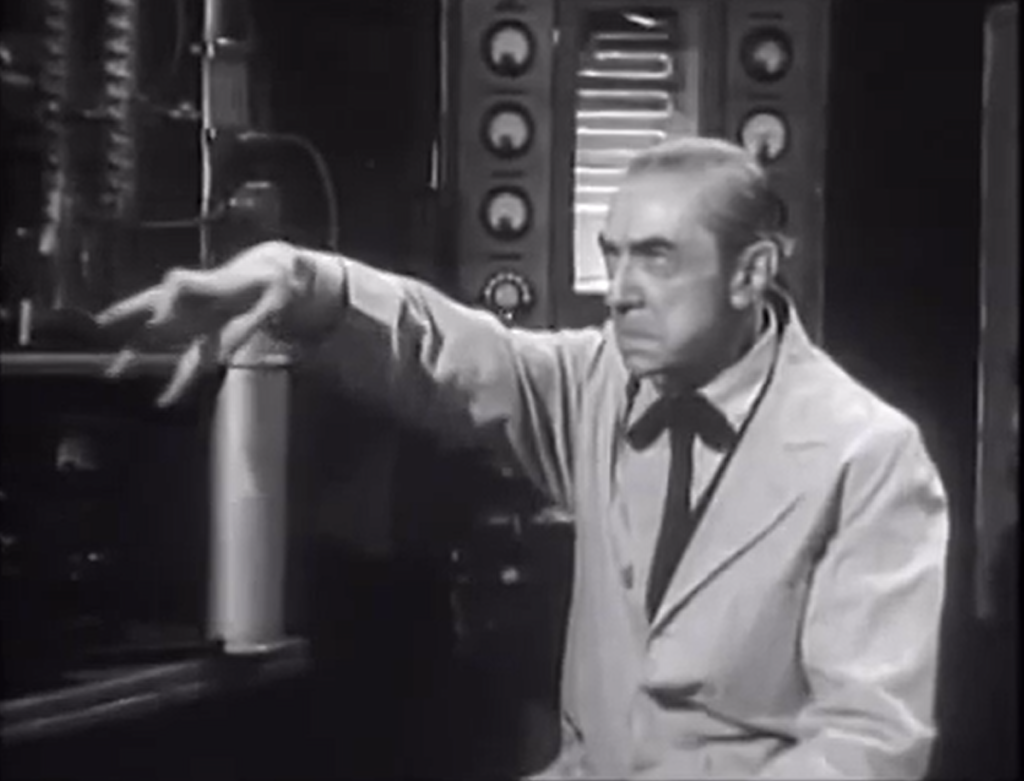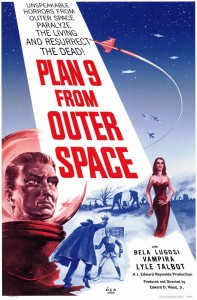|
Genres, Themes, Actors, and Directors:
- Aliens
- Bela Lugosi Films
- Ed Wood Films
- Mind Control and Hypnosis
- Science Fiction
- World Domination
- Zombies
Response to Peary’s Review:
In the opening of his review for this infamously awful film — voted the “World’s Worst Film” by readers of the Medved brothers’ Golden Turkey Awards — Peary writes that in an “era when bad-film freaks have come out of the closet and really awful films are looked on with affection, Edward D. Wood’s berserk sci-fi film is revered by a large and growing cult who contend that it has moved beyond camp to legend status” (indeed, he analyzes it at length in his first Cult Movies book). Peary facetiously notes that if you “give a monkey a camera… it’ll make a better picture”, and will “certainly do a better job with the money” (neither of which is quite true), and notes that “every facet of this production, from acting, script, and direction to special effects, prop selection, and editing, is putrid” — “so putrid that the film is hilarious”.
The production history of this notoriously awful howler is so well-documented that I humbly refer you to any of the reviews referenced below (or to Wikipedia’s article). In a nutshell, Wood appears to have cobbled his film together out of the very limited resources he had at hand — starting with two minutes of footage of his recently deceased friend, Bela Lugosi, whose character is thereafter played by his wife’s chiropractor, hiding his face behind a cape. The result is a film in which nearly every “bad movie” element one can think of shows up — and (as noted in Peary’s Cult Movies review), “except for about a hundred dull spots”, it’s actually “a lot of fun”. In his more extended review, Peary calls out the film’s many hilariously awful features, including the “terrible cheap sets”; the hideous interpolation of shots taking place in daytime and nighttime; the flying saucers (made out of paper plates) which “look like chinaware flung into the air”; the way that “everyone fails to respond while The Ghoul Man… strangles Officer Calvin in front of their eyes”; and, of course, the “incomparable dialogue” — all of which make for a surprisingly entertaining viewing experience, if you’re in the right mood.
Interestingly, Peary argues that Wood made a film which is so “atrocious” that perhaps he hoped “censors wouldn’t bother with [the] subversive themes”. He suggests that in “this one God-awful, terribly made, poor excuse for a picture, Wood is more critical of America’s government (which conceals much from the public) and military strategy (that calls for an arms build-up and further nuclear testing) than any other director of the period dared to be.” That alone, as Peary writes, may be reason enough to relegate “another, less daring film to wear” this film’s dubious “World’s Worst film banner”; he quickly notes, however, that he’s “just kidding”.
P.S. In his review, Peary mentions that “God [only] knows what the first eight ‘Plans’ were” — but if you’d like to hear one band’s take on this hypothetical question, click here.
P.P.S. Since Plan 9 is in the public domain, it’s available for free viewing at http://www.archive.org/.
Redeeming Qualities and Moments:
- Laughably bad dialogue: “Future events such as these will affect us in the future.”
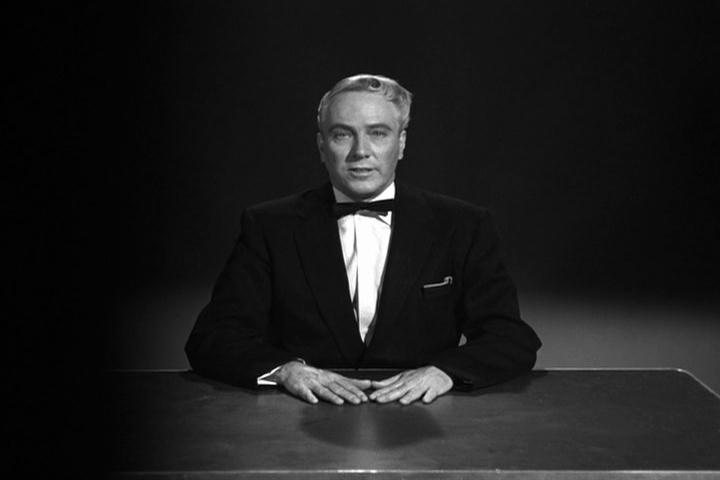
- Plenty of unintentional “bad movie” laughs throughout
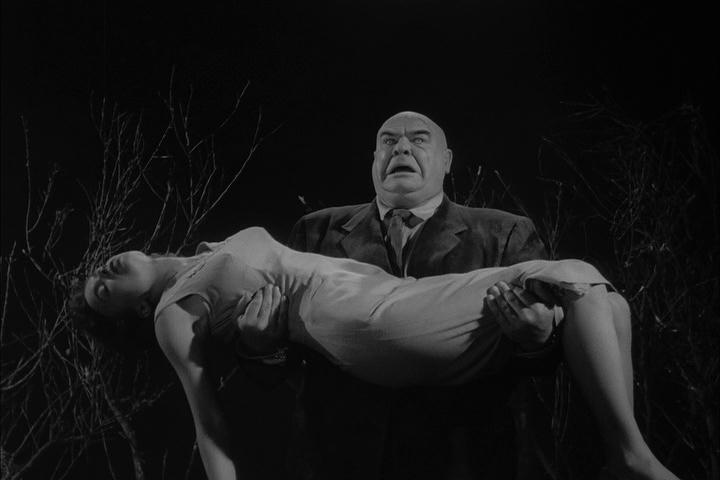
- A surprisingly provocative and subversive “message”
Must See?
Of course — as the ultimate “bad movie” experience. Check out the second paragraph of Richard Scheib’s review for an illuminating overview of the various types of “bad” movies out there; he convincingly argues that the term “bad” is far too vague to fit the spectrum of ineptitude present in the world of cinema.
Categories
Links:
|
